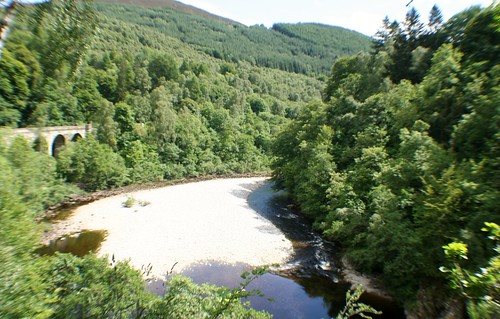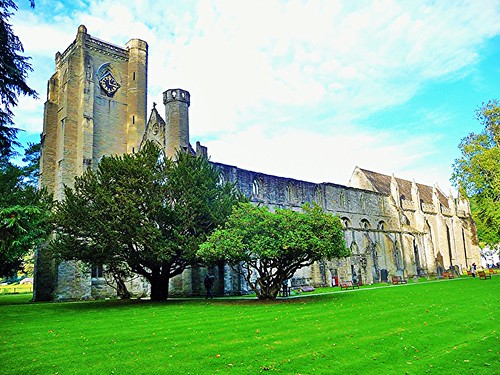Battle of Killiecrankie
(Above image is a capture of the River Garry flowing through the gorge near the battle site at Killiecrankie.)
Battle of Killiecrankie: July 27th 1689
Killiecrankie is a village located in central Scotland, about 4 miles north of Pitlochry.
Background
Religion: Charles II ( tolerant of Protestantism) dies 1685. Replaced by brother James VII who is pro-Catholic. James VII deposed 1688. In turn replaced by William and Mary from Holland who were Protestants.
Charles and James from House of Stewart ( Stuart) which still retained support in Highlands. Stewart cause championed by charismatic military leader James Graham of Claverhouse ( “Bonnie Dundee”) who gathered together an army of Highland clansmen totalling some 2500. Supporters of the Stewarts known as ‘Jacobites’ because 'Jacob' is Latin for James (the deposed James VII).
Opposing Government army of 4000 under General Mackay ( infantry, cavalry, and dragoons).
Both armies engaged in race for strategically important site of Blair Castle (near Killiecrankie) which Jacobites won, arriving on July 26th.
Blair Castle
Mackay’s army marched up from Dunkeld on morning of 27th, navigating the narrow and treacherous pass of Killiecrankie. However, the force was not ambushed in the pass. H.Q. at Urrard House, Killiecrankie.
Battle
Jacobites advanced from high elevation. Mackay realised disadvantage and ordered troops up slope only to find another ridge and still at disadvantage. However, Dundee refused to advance because troops faced west with sun in eyes. At 8.00 pm Jacobites advanced (charged). Mackay’s battalions were deployed in extended line with a gap. Lie of land forced Jacobite charge to right exposing force to devastating fire from Mackay’s right. However, force on left took brunt of attack pitching broadswords against bayonets which resulted in some Govt forces fleeing the site. Mackay attacked but was repulsed and his remaining forces fled. Jacobites failed to pursue advantage by plundering the baggage train.
Outcome
Half of Mackay’s army killed or taken prisoner. Jacobites suffered 600 casualties including leader, Dundee.
Soldier’s Leap
During the flight of the government forces a soldier named Donald MacBane made a spectacular escape worthy of an Olympic athlete. Chased by a group of Highlanders, MacBane made an 18 ft ( 5.5m) leap across the fast flowing River Garry. Later he wrote ” Many of our men were lost in that water”.
Approximate site of Soldier’s Leap
Dunkeld 21st August, 1689 (17 miles south of Killiecrankie)
Jacobite army of 5000 under Colonel Cannnon (en-route to Perth) encountered Government force of 1200 Cameronians under Lt. Colonel Cleland.
In early hours Jacobites attacked town on all four sides. Close quarter, house to house fighting ensued. Many houses deliberately burned by Government forces
Final Cameronian redoubt round twin bastions of Cathedral and Dunkeld House. Used Jacobite dead as barriers. Cleland was killed but Jacobites withdrew with loss of about 300 for 45 on Government side.
Dunkeld Cathedral
After the Battle of Dunkeld the Jacobite army dispersed.
Subsequent Events
In 1690 James lost the Battle of Boyne in Ireland which ended his attempt to regain the throne. Intermittent Jacobite uprisings took place until final defeat (of the Jacobites) in 1746.
© Nigel P Cole/Catswhiskerstours Limited





Comments
Post a Comment